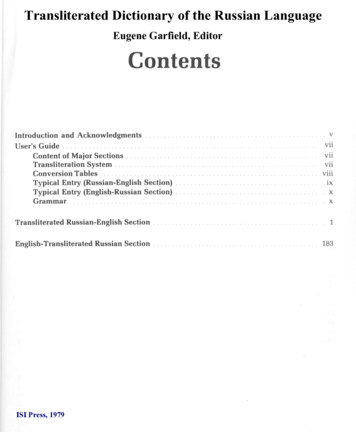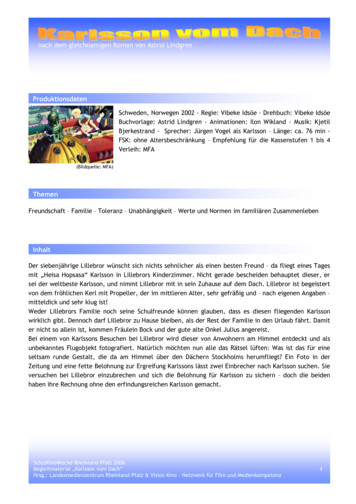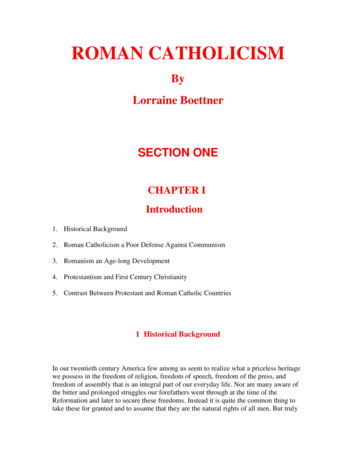
Transcription
ROMAN CATHOLICISMByLorraine BoettnerSECTION ONECHAPTER IIntroduction1. Historical Background2. Roman Catholicism a Poor Defense Against Communism3. Romanism an Age-long Development4. Protestantism and First Century Christianity5. Contrast Between Protestant and Roman Catholic Countries1 Historical BackgroundIn our twentieth century America few among us seem to realize what a priceless heritagewe possess in the freedom of religion, freedom of speech, freedom of the press, andfreedom of assembly that is an integral part of our everyday life. Nor are many aware ofthe bitter and prolonged struggles our forefathers went through at the time of theReformation and later to secure these freedoms. Instead it is quite the common thing totake these for granted and to assume that they are the natural rights of all men. But truly
those of us who call ourselves Protestants are the inheritors of a great tradition. And in acountry such as the United States our Roman Catholic friends also share these freedoms,little realizing what it means to live under a clerical dictatorship such as their churchimposes wherever it has the power.Roman Catholics often attempt to represent Protestantism as something comparativelynew, as having originated with Martin Luther and John Calvin in the 16th century. We doindeed owe a great debt to those leaders and to the Reformation movement that sweptover Europe at that time. But the basic principles and the common system of doctrinetaught by those Reformers and by the evangelical churches ever since go back to the NewTestament and to the first century Christian church. Protestantism as it emerged in the16th century was not the beginning of something new, but a return to Bible Christianityand to the simplicity of the Apostolic church from which the Roman Church had longsince departed.The positive and formal principle of this system is that the Bible is the Word of God andtherefore the authoritative rule of faith and practice. Its negative principle is that anyelement of doctrine or practice in the church which cannot be traced back to the NewTestament is no essential part of Christianity.The basic features of Protestant belief therefore are:The supremacy of the Bible in all matters of faith and practice.Justification by faith, not by works, although works have their necessary and logicalplace as the fruits and proof of true faith.The right of the individual to go directly to God in prayer apart from the mediation of anypriest or other human intermediary.Individual freedom of conscience and worship, within the authority of the Bible.For more than a thousand years before the Reformation the popes had controlled Europeand had said that there was only one way to worship God. That period is appropriatelyknown as the “Dark Ages.” In the church and, to a considerable extent, in the state, too,the priests held the power. They suppressed the laity until practically all their rights weretaken away. They constantly pried into private affairs, interfering even between husbandand wife and between parents and children by means of the confessional. All marriagewas in their hands. They interfered in the administration of public affairs, in theproceedings of the courts, and in the disposition of estates. The revenues of the state builtnew churches and paid the salaries of the priests in much the same manner as in presentday Spain. Anyone who dared resist ran the risk of losing his job, his property, and evenhis life. Life under such tyranny was intolerable. From that condition the Reformationbrought deliverance.
One of the first and most important results of the Reformation was that the Bible wasgiven to the people in their own languages. Previously the Bible had been kept fromthem, on the pretext that only the church speaking through the priest could interpret itcorrectly. Luther translated the Bible into his native German, and edition followed editionin rapid succession. Similar translations were made in England, France, Holland, andother countries.Protestants of our day who have not been called upon to suffer or to make any sacrificesto secure this rich heritage are inclined to hold these blessings lightly. But the advancesthat Romanism is making today in this nation and in other parts of the world should causeeven the most careless to stop and think. It seems that as Protestants we have forgottenhow to protest against those same religious and political abuses that were common beforethe Reformation. We need to acquaint ourselves with and to teach the principles of ourfaith if we are not to be overwhelmed by a religious despotism that, if it gains the upperhand, will be as cruel and oppressive as ever it was in Germany, Italy, France, or Spain.Our American freedoms are being threatened today by two totalitarian systems,Communism and Roman Catholicism. And of the two in our country Romanism isgrowing faster than is Communism and is the more dangerous since it covers its realnature with a cloak of religion. This nation has been well alerted to the dangers ofCommunism, and it is generally opposed by the radio, the press, and the churches. ButRomanism has the support of these to a considerable extent, and even the Protestantchurches in many places take a conciliatory and cooperative attitude toward it. Mostpeople have only a very hazy notion as to what is involved in the Roman system. And yetthe one consuming purpose of the Vatican is to convert the entire world, not toChristianity, but to Roman Catholicism. Its influence is being applied vigorously at everylevel of our local, state, and federal government. It is particularly significant that in thiscountry the hierarchy has taken as its slogan, not, “Make America Christian,” but, “MakeAmerica Catholic.” And in that slogan are the strong overtones of a full scale attack uponour Protestant heritage and those precious rights of freedom of religion, freedom ofconscience, and freedom of speech.We cannot adequately understand this problem unless we realize that the kind of RomanCatholicism that we see in the United States is, for the most part, not real RomanCatholicism at all, that is, not Roman Catholicism as it exists where it is the dominantforce in the life of a nation, but a modified and compromised form that has adjusted itselfto life with a Protestant majority. Here it is comparatively reticent about asserting itsclaims to be the only true church, the only church that has a right to conduct publicreligious services, its right to suppress all other forms of religion, its superiority to allnational and state governments, its control over all marriage, its right to direct alleducation, and the obligation of the state to support its churches and schools with taxmoney. That this is no visionary list of charges, but a cold and realistic appraisal, isshown by the fact that in Spain, which is governed under the terms of a concordat withthe Vatican, and which is often praised by Roman Catholic spokesmen as the idealCatholic state, the Roman Church is now exercising most of these so-called “rights” orprivileges.
In order to see clearly what Roman Catholicism really is, we must see it as it was duringthe Middle Ages, or as it has continued to be in certain countries such as Spain, Portugal,Italy, France, Southern Ireland, and Latin America, where it has had political as well asecclesiastical control. In those countries where it has been dominant for centuries withlittle or no opposition from Protestantism, we see the true fruits of the system in the livesof the people, with all of their poverty, ignorance, superstition, and low moral standards.In each of those countries a dominant pattern is discernible. Spain is a particularly goodexample, for it is the most Roman Catholic country in Europe, yet it has the loweststandard of living of any nation in Europe. The Latin American nations have beenpredominantly Roman Catholic for four centuries, and today the illiteracy rate rangesfrom 30 to 70 percent. The veteran radio political analyst, Howard K. Smith, recentlyreported that “The average per capita income in the United States is eight times that ofany country in South America” (March 3, 1960). The average per capita income in SouthAmerica is 280, one ninth that in the United States.But even in those countries we do not see the ultimate fruits of the system. For over aperiod of years they have been influenced to some extent by Protestantism and they havebeen receiving assistance from the Protestant nations, particularly from the United Statesand England, so that their present condition, economic, social, political, and religious, isnot nearly as bad as it would have been had they been left to themselves. Substantial aidhas been given since the close of the First World War. American foreign aid, economicand military, granted to other nations since the Second World War through 1977,amounted to 200 billion (Statistical Abstract of the U.S., 1978). And probably 50billion more has been granted since that time, making a total of approximately 250billion. The Roman Catholic nations of Europe and Latin America have profited greatlythrough this assistance.American Catholicism, so different on the surface from that found in Spain, Italy, andLatin America, is, nevertheless, all a part of the same church, all run from Rome and bythe same man who is the absolute ruler over all of the branches and who has the authorityto change policy in any of those branches as he deems it safe or expedient. If he chose togive his subjects in Spain or Colombia relatively more freedom and better schools, suchas are enjoyed by those in the United States, he could readily do so by directing hispriests and financial resources to that end. Undoubtedly Romanism in the United Stateswould be much the same as that found in other countries were it not for the influence ofevangelical Christianity as set forth by the Protestant churches.2Roman Catholicism a Poor Defense against CommunismWe have no hesitation in saying that most of the Roman Catholic nations, had they beenleft to themselves, long ago would have fallen victims of Communism. In all probability
both Italy and France would have turned Communist at the close of the Second WorldWar had it not been for American aid and all of the political influence that ourgovernment could lawfully exert toward those nations, and even then the result was indoubt for some considerable time. The Vatican had supported Mussolini’s Fascist andmilitary policies, including the conquest of Ethiopia (which conquest had beencondemned by the League of Nations and by practically all of the civilized world), hisopen and extensive support of Franco in Spain with troops and arms, and his invasion ofAlbania and Greece. After Italy entered the war on the side of Nazi Germany the RomanChurch supported the Italian war effort, which meant, of course, that our work ofcarrying the war to a successful conclusion was made just that much harder. During thewar Pope Pius XII gave his blessing to large numbers of Italian and German troops whoappeared before him in uniform. With the defeat of Germany and Italy those policiescaused strong popular resentment. It is probable that, in the turmoil that followed theignominious fall of Mussolini, the Roman Catholic Church would have been overthrownin much the same way that the Orthodox Catholic Church in Russia was overthrownwhen the Czarist regime fell at the end of the First World War, had not American militaryforces then in Italy preserved order. In Russia a dead, formalistic church had lost therespect of the people and had become identified with the despotic rule of the Czar sincehe was the head of both the state and the church. When the people rose up in anger andthrew out the political government, they threw out the church with it and turned to theother extreme, atheism. That has often been the case where the people have known onlyone church. When that became corrupt they had no alternative but to turn against religionaltogether.In the critical Italian election held after the war, in April, 1948, the Communists made astrong effort to gain control of the government, but a coalition of other parties managedto gain the majority. Today the biggest Communist party outside of Russia and RedChina is found in Roman Catholic Italy, seat of the papacy, precisely where, if RomanCatholicism is the effective defense against Communism that it claims to be, we shouldfind the least Communism. Approximately one third of the voters in Italy today areCommunist, as are approximately one fourth of those in France.Roman Catholicism opposes Communism, of course, as one totalitarian system opposesanother. And for propaganda purposes she even attempts to present herself as the chiefopponent of, and the chief bulwark against, Communism. But the fact is that during thepast fifteen years Communism has made its greatest gains in Roman Catholic nations,both in Europe and in Latin America, while the Protestant nations, the United States,Britain, Canada, Holland, Norway, Sweden, and Denmark, have been its most effectiveopponents. It is in reality only a short step from a totalitarian church to a totalitarian state,since the people have been trained to accept authority as it is imposed upon them ratherthan to think for themselves and to manage their own affairs.In his very informative book, American Freedom and Catholic Power, Paul Blanshard,American sociologist and journalist who has written extensively on church-staterelations, says:
“In several great crises in Europe the Vatican has, through passive and activecollaboration with fascism, thrown the balance of power against democracy. . It hasaligned itself with the most reactionary forces in Europe and Latin America. Surely it isnot by accident that the two most fascist nations in the world today—Spain andPortugal—are Catholic nations whose dictators have been blessed by the pope and areconspicuously loyal to him! The Vatican’s affinity with fascism is neither accidental norincidental. Catholicism conditions its people to accept censorship, thought control, andultimately dictatorship” (Rev. ed., 1958, p. 291; Beacon Press, Boston).And Count Coudenhove-Kalergi, a former Roman Catholic, says:“Catholicism is the fascist form of Christianity of which Calvinism represents itsdemocratic wing. The Catholic hierarchy rests fully and securely on the leadershipprinciple with the infallible pope in supreme command for a lifetime. . Like the Fascistparty, its priesthood becomes a medium for an undemocratic minority rule by a hierarchy. Catholic nations follow fascist doctrines more willingly than Protestant nations, whichare the main strongholds of democracy. Democracy lays its stress on personalconscience; fascism on authority and obedience” (Crusade for Pan-Europe, p. 173 ).If the United States should become Roman Catholic, the result undoubtedly would be therapid conquest of this country and the rest of the world by Russian Communism. In viewof the weak defense that the Roman Catholic countries are able to put up intellectually,morally, or militarily, we are safe in saying that one of the surest ways to turn this nationCommunist would be to turn it first to Roman Catholicism. We have acted as a strongrestraint in keeping Roman Catholic nations from going Communist. But who wouldrestrain this nation? There would be no other to serve that purpose, and our descentwould be sure and swift.The fact is that much of the popular support that the puppet governments behind the IronCurtain have received has been given because they have forbidden the Roman CatholicChurch to take any part in political affairs or to control the schools. In several countries,both in Europe and in Latin America, the only choice the people have is either Romanismor Communism. Protestantism, as an alternative choice, is practically non-existent. Thosepeople have been taught hatred for Protestantism from childhood, and few of them wouldtry it. Many vote Communist, not because they believe in the program, but because it isthe only effective instrument they have to oppose Roman Catholicism.On the other hand, to see what the effect of Protestantism is upon a people we turn to theUnited States, where with complete separation of church and state the Reformation hasmade its greatest advance, and to Britain and the other nations where Protestantism haslong been the dominant religion. These we find are unquestionably the most enlightenedand advanced nations of the world; and in the main it is from these nations, where thepeople are accustomed to think and act for themselves and to govern themselves in bothchurch and state, that the opposition to Communism has come.
3Romanism an Age-Long DevelopmentOne of the first things that we want to point out in this study is that the Roman CatholicChurch has not always been what it is today. Rather, it has reached its present state as theresult of along, slow process of development as through the centuries one new doctrine,or ritual, or custom after another has been added. Even a superficial reading of thefollowing list will make clear that most of the distinctive features of the system wereunknown to Apostolic Christianity, and that one can hardly recognize in present dayRomanism the original Christian doctrines. Not all dates can be given with exactnesssince some doctrines and rituals were debated or practiced over a period of time beforetheir formal acceptance.SOME ROMAN CATHOLIC HERESIES AND INVENTIONSand the dates of their adoption over a period of 1,650 years1. Prayers for the dead: began about A.D. 300.2. Making the sign of the cross: A.D. 300.3. Wax candles: about A.D. 320.4. Veneration of angels and dead saints, and use of images: A.D. 375.5. The Mass, as a daily celebration: A.D. 394.6. Beginning of the exaltation of Mary, the term “Mother of God” first applied to her bythe Council of Ephesus: A.D. 431.7. Priests began to dress differently from laymen: A.D. 500.8. Extreme Unction: A.D. 526.9. The doctrine of Purgatory, established by Gregory I: A.D. 593.10. Latin language, used in prayer and worship, imposed by Gregory I: A.D. 600.11. Prayers directed to Mary, dead saints, and angels: about A.D. 600.12. Title of pope, or universal bishop, given to Boniface III by emperor Phocas: A.D. 607.
13. Kissing the pope’s foot, began with Pope Constantine: A.D. 709.14. Temporal power of the popes, conferred by Pepin, king of the Franks: A.D. 750.15. Worship of the cross, images, and relics: authorized in A.D. 786.16. Holy water, mixed with a pinch of salt and blessed by a priest: A.D. 850.17. Worship of St. Joseph: A.D. 890.18. College of Cardinals established: A.D. 927.19. Baptism of bells, instituted by pope John XIII: A.D. 965.20. Canonization of dead saints, first by Pope John XV: A.D. 995.21. Fasting on Fridays and during Lent: A.D. 998.22. The Mass, developed gradually as a sacrifice, attendance made obligatory in the 11thcentury.23. Celibacy of the priesthood, decreed by pope Gregory VII (Hildebrand): A.D. 1079.24. The Rosary, mechanical praying with beads, invented by Peter the Hermit: A.D. 1090.25. The Inquisition, instituted by the Council of Verona: A.D. 1184.26. Sale of Indulgences: A.D. 1190.27. Transubstantiation, proclaimed by Pope Innocent III: A.D. 1215.28. Auricular Confession of sins to a priest instead of to God, instituted by Pope InnocentIII, in Lateran Council: A.D. 1215.29. Adoration of the wafer (Host), decreed by Pope Honorius III: A.D. 1220.30. Bible forbidden to laymen, placed on the Index of Forbidden Books by the Council ofToulouse: A.D. 1229.31. The Scapular, invented by Simon Stock, an English monk: A.D. 1251.32. Cup forbidden to the people at communion by Council of Constance: A.D. 1414.33. Purgatory proclaimed as a dogma by the Council of Florence: A.D. 1439.34. The doctrine of Seven Sacraments affirmed: A.D. 1439.
35. The Ave Maria (part of the last half was completed 50 years later and approved byPope Sixtus V at the end of the 16th century): A.D. 1508.36. Jesuit order founded by Loyola: A.D. 1534.37. Tradition declared of equal authority with the Bible by the Council of Trent: A.D.1545.38. Apocryphal books added to the Bible by the Council of Trent: A.D. 1546.39. Creed of pope Pius IV imposed as the official creed: A.D. 1560.40. Immaculate Conception of the Virgin Mary, proclaimed by Pope Pius IX: A.D. 1854.41. Syllabus of Errors, proclaimed by Pope Pius IX and ratified by the Vatican Council;condemned freedom of religion, conscience, speech, press, and scientific discoverieswhich are disapproved by the Roman Church; asserted the pope’s temporal authority overall civil rulers: A.D. 1864.42. Infallibility of the pope in matters of faith and morals, proclaimed by the VaticanCouncil: A.D. 1870.43. Public Schools condemned by Pope Pius XI: A.D. 1930.44. Assumption of the Virgin Mary (bodily ascension into heaven shortly after her death),proclaimed by Pope Pius XII: A.D. 1950.45. Mary proclaimed Mother of the Church by Pope Paul VI: A.D. 1965.Add to these many others: monks, nuns, monasteries, convents, forty days Lent, holyweek, Palm Sunday, Ash Wednesday, All Saints day, Candlemas day, fish day, meatdays, incense, holy oil, holy palms, Christopher medals, charms, novenas, and still others.There you have it—the melancholy evidence of Rome’s steadily increasing departurefrom the simplicity of the Gospel, a departure so radical and far-reaching at the presenttime that it has produced a drastically anti-evangelical church. It is clear beyondpossibility of doubt that the Roman Catholic religion as now practiced is the outgrowth ofcenturies of error. Human inventions have been substituted for Bible truth and practice.Intolerance and arrogance have replaced the love and kindness and tolerance that werethe distinguishing qualities of the first century Christians, so that now in Roman Catholiccountries Protestants and others who are sincere believers in Christ but who do notacknowledge the authority of the pope are subject to all kinds of restrictions and in somecases even forbidden to practice their religion. The distinctive attitude of the present dayRoman Church was fixed largely by the Council of Trent (1545-1563), with its more than
100 anathemas or curses pronounced against all who then or in the future would dare todiffer with its decisions.Think what all of this means! Each of the above doctrines or practices can be pin-pointedto the exact or approximate date at which it became a part of the system. And no singleone of them became a part of the system until centuries after the time of Christ! Most ofthese doctrines and practices are binding on all Roman Catholics, for they have beenproclaimed by a supposedly infallible pope or church council. To deny any doctrine orpractice so proclaimed involves one in mortal sin.What will be next? Indications are that it will be another proclamation concerning Mary.Two new doctrines are under discussion: Mary as Mediatrix, and Mary as Co-redemptrix.Important Roman Catholic authorities have already indicated that these will be the nextdoctrines officially proclaimed. Mary is being presented in current Roman teaching as aMediator along with Christ. She is said to be the “Mediatrix of all graces,” and the peopleare being told that the way to approach Christ is through His mother. “To Christ throughMary,” is the slogan. Her images outnumber those of Christ, and more prayer is offeredto her than to Christ.It is also being said that Mary’s sufferings, particularly those at the cross, wereredemptive in the same sense that Christ’s sufferings were redemptive. It would seem thatthese two doctrines, if adopted, would in effect place Mary as a fourth member of theGodhead, along with the Father, Son, and Holy Spirit. And presumably these doctrines, ifadopted, will be officially announced by the pope, for he was proclaimed infallible in thisregard in 1870 and therefore no longer needs the authority of an ecumenical council.And still the Roman Church boasts that she never changes or teaches new doctrines!Semper idem—“Always the same”—is her motto! The fact that not one of the doctrinesin the above list has any support in the Bible disproves conclusively the claim of thepriests that their religion is the same as that taught by Christ and that the popes have beenthe faithful custodians of that truth.The fact is that many of the above listed rites and ceremonies were taken directly frompaganism or from Old Testament Judaism. Some scholars say that as much as 75 percentof the Roman ritual is of pagan origin. John Henry Newman, later cardinal, in his book,The Development of the Christian Religion, admits that “Temples, incense, oil lamps,votive offerings, holy water, holy days and seasons of devotion, processions, blessings offields, sacerdotal vestments, the tonsure (of priests, monks, and nuns), images, etc., areall of pagan origin” (p. 359).While the Roman Church has been so free to hurl the name “heretic” at all who differwith her, the above list shows that the real heretics are the Roman Catholics themselves,and that the true orthodox are the evangelical Christians. Says the Scripture:
“But in vain do they worship me, teaching as their doctrines the precepts of men. .Making void the word of God by your tradition, which ye have delivered: and many suchlike things ye do” (Mark 7:7,13).“To the law and to the testimony! if they speak not according to this word, surely there isno morning for them” (Isaiah 8:20).Surely the Apostle Paul knew the human tendency to add to the Word of God when hegave this warning to the early church:“I know that after my departing grievous wolves shall enter in among you, not sparing theflock; and from among your own selves shall men arise, speaking perverse things, todraw away the disciples after them” (Acts 20:29-30). And even more strongly: “Butthough we, or an angel from heaven, should preach unto you any gospel other than thatwhich we preached unto you, let him be anathema” (Galatians 1:8).4Protestantism and First Century ChristianityEver since New Testament times there have been people who accepted the basicprinciples now set forth in Protestantism. That is, they took the Bible as theirauthoritative standard of belief and practice. They were not called Protestants. Neitherwere they called Roman Catholics. They were simply called Christians. During the firstthree centuries they continued to base their faith solely on the Bible. They often facedpersecution, sometimes from the Jews, sometimes from the pagans of the Roman empire.But early in the fourth century the emperor Constantine, who was the ruler in the West,began to favor Christianity, and then in the year 324, after he had become ruler of all ofthe empire, made Christianity the official religion. The result was that thousands ofpeople who still were pagans pressed into the church in order to gain the specialadvantages and favors that went with such membership. They came in far greaternumbers than could be instructed or assimilated. Having been used to the more elaboratepagan rituals, they were not satisfied with the simple Christian worship but began tointroduce their heathen beliefs and practices. Gradually, through the neglect of the Bibleand the ignorance of the people, more and more heathen ideas were introduced until thechurch became more heathen than Christian. Many of the heathen temples were takenover by the church and re-dedicated as Christian churches.Thus in time there was found in the church a sacrificing and gorgeously appareledpriesthood, an elaborate ritual, images, holy water, incense, monks and nuns, the doctrineof purgatory, and in general a belief that salvation was to be achieved by works ratherthan by grace. The church in Rome, and in general the churches throughout the empire,ceased to be the apostolic Christian church, and became for the most part a religiousmonstrosity.
There remained, however, some groups, small in numbers, usually in isolated places, andlater primarily in the mountains of northern Italy, who maintained the Christian faith inreasonable purity. There were also individuals throughout the church in all ages, usuallymore or less independent of the church at large, who continued to hold quite correct ideasconcerning the Christian faith. But the half paganized condition continued through theMiddle Ages and on into the 16th century when the religious revival in the West, knownas the Reformation, shook the church to its foundations. At that time some scholars beanto study Bible manuscripts that had been brought to light by the forced flight of easternmonks from their monasteries as the Mohammedan invasions extended into Europe, andthese scholars saw how far the church had departed from its original Scriptures.First there came the Renaissance, which was primarily a revival of learning, followedshortly by the Reformation. Some of the scholars in the church were called “Reformers.”They called the people back to the Bible, and there they saw how wrong and contrary toScripture was the use of images, holy water, priests saying mass, and church services inLatin which the people could not understand. The Reformers strongly attacked theignorance and superstition that had become such a large part of the church program, andgave the people a service in their own language with preaching based on the Word ofGod. Protestantism, therefore, was not a new religion, but a return to the faith of the earlychurch. It was Christianity cleaned up, with all the rubbish that had collected during theMiddle Ages thrown out.The Reformation, under Luther, Zwingli, Calvin, and Knox, was literally a“back-to-the-Bible” movement, a return to apostolic Christianity. EvangelicalChristianity has established itself as the historic faith of the first century, which camedown through the ante-Nicene Fathers and Augustine, which was largely obscured duringthe Middl
16th century was not the beginning of something new, but a return to Bible Christianity and to the simplicity of the Apostolic church from which the Roman Church had long since departed. The positive and formal principle of this system is that the Bible is the Word of God an
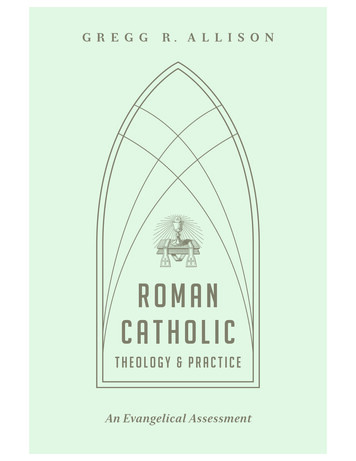

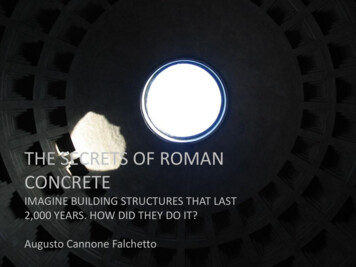

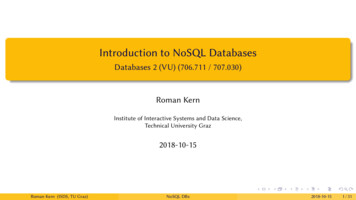

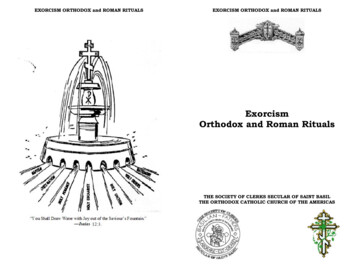
![Untitled-3 [mainetelugu ]](/img/4/telugu-alphabet-workbook.jpg)
